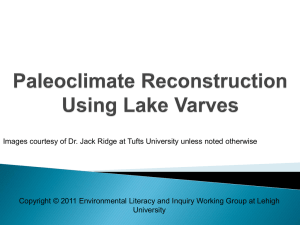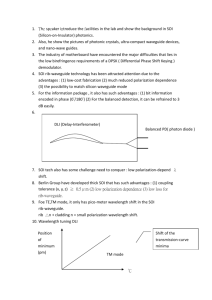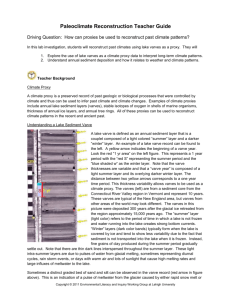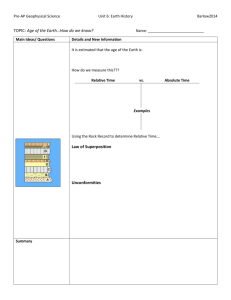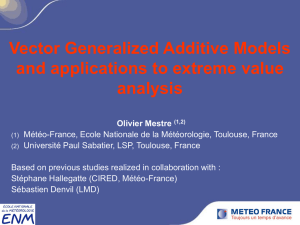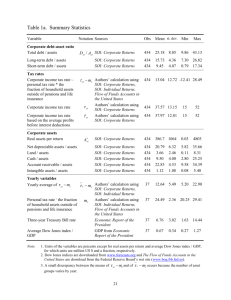Climate oscillations recorded in Chilean lacustrine sediments (Lago
advertisement
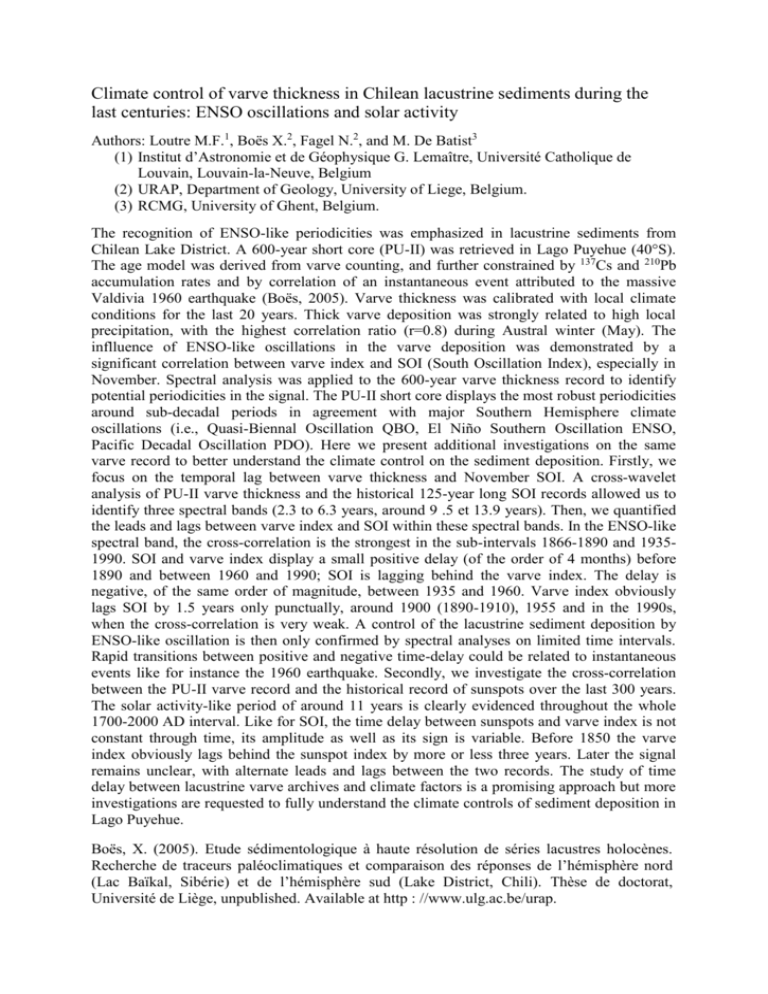
Climate control of varve thickness in Chilean lacustrine sediments during the last centuries: ENSO oscillations and solar activity Authors: Loutre M.F.1, Boës X.2, Fagel N.2, and M. De Batist3 (1) Institut d’Astronomie et de Géophysique G. Lemaître, Université Catholique de Louvain, Louvain-la-Neuve, Belgium (2) URAP, Department of Geology, University of Liege, Belgium. (3) RCMG, University of Ghent, Belgium. The recognition of ENSO-like periodicities was emphasized in lacustrine sediments from Chilean Lake District. A 600-year short core (PU-II) was retrieved in Lago Puyehue (40°S). The age model was derived from varve counting, and further constrained by 137Cs and 210Pb accumulation rates and by correlation of an instantaneous event attributed to the massive Valdivia 1960 earthquake (Boës, 2005). Varve thickness was calibrated with local climate conditions for the last 20 years. Thick varve deposition was strongly related to high local precipitation, with the highest correlation ratio (r=0.8) during Austral winter (May). The inflluence of ENSO-like oscillations in the varve deposition was demonstrated by a significant correlation between varve index and SOI (South Oscillation Index), especially in November. Spectral analysis was applied to the 600-year varve thickness record to identify potential periodicities in the signal. The PU-II short core displays the most robust periodicities around sub-decadal periods in agreement with major Southern Hemisphere climate oscillations (i.e., Quasi-Biennal Oscillation QBO, El Niño Southern Oscillation ENSO, Pacific Decadal Oscillation PDO). Here we present additional investigations on the same varve record to better understand the climate control on the sediment deposition. Firstly, we focus on the temporal lag between varve thickness and November SOI. A cross-wavelet analysis of PU-II varve thickness and the historical 125-year long SOI records allowed us to identify three spectral bands (2.3 to 6.3 years, around 9 .5 et 13.9 years). Then, we quantified the leads and lags between varve index and SOI within these spectral bands. In the ENSO-like spectral band, the cross-correlation is the strongest in the sub-intervals 1866-1890 and 19351990. SOI and varve index display a small positive delay (of the order of 4 months) before 1890 and between 1960 and 1990; SOI is lagging behind the varve index. The delay is negative, of the same order of magnitude, between 1935 and 1960. Varve index obviously lags SOI by 1.5 years only punctually, around 1900 (1890-1910), 1955 and in the 1990s, when the cross-correlation is very weak. A control of the lacustrine sediment deposition by ENSO-like oscillation is then only confirmed by spectral analyses on limited time intervals. Rapid transitions between positive and negative time-delay could be related to instantaneous events like for instance the 1960 earthquake. Secondly, we investigate the cross-correlation between the PU-II varve record and the historical record of sunspots over the last 300 years. The solar activity-like period of around 11 years is clearly evidenced throughout the whole 1700-2000 AD interval. Like for SOI, the time delay between sunspots and varve index is not constant through time, its amplitude as well as its sign is variable. Before 1850 the varve index obviously lags behind the sunspot index by more or less three years. Later the signal remains unclear, with alternate leads and lags between the two records. The study of time delay between lacustrine varve archives and climate factors is a promising approach but more investigations are requested to fully understand the climate controls of sediment deposition in Lago Puyehue. Boës, X. (2005). Etude sédimentologique à haute résolution de séries lacustres holocènes. Recherche de traceurs paléoclimatiques et comparaison des réponses de l’hémisphère nord (Lac Baïkal, Sibérie) et de l’hémisphère sud (Lake District, Chili). Thèse de doctorat, Université de Liège, unpublished. Available at http : //www.ulg.ac.be/urap.
